What is Container Gardening and How to Start
Want to garden but don’t think you have enough room? Think again. You can garden even if you don’t have that much space. You can container garden. I’m sharing what container gardening is. And these beginner container gardening tips can help you get started today.
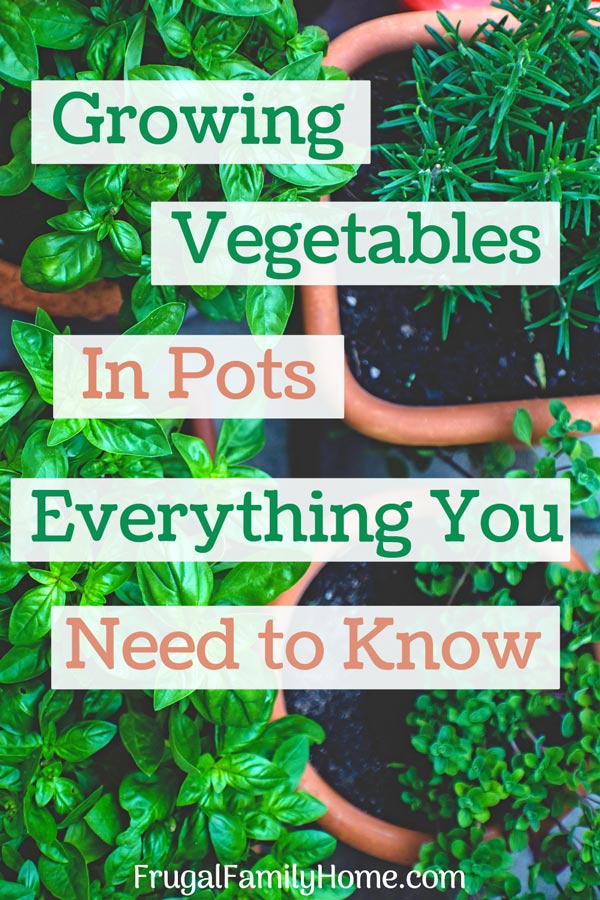
Can you really grow vegetables in pots?
Yes, you really can grow vegetables in pots, if you have the basics down.
Growing vegetables in pots has been something I started doing a long time ago. At our first home we had little space in our garden. Our vegetable garden was comprised a few pots with a few plants but it was a start.
You might wonder how do I start a container garden?
The first thing you will need to start a container garden is something to grow in. So let’s get started by talking about containers to plant in. And I’ll share more tips as we go along.

Containers to Use…
These are a few ideas to get you started for containers to plant your garden in. But you can use just about anything that will hold dirt and drain extra water.
Pots, ok even if you are a beginning gardener I’m sure you’ve already thought about using pots to plant in. But there are many types of pots to choose from….
Clay Pots, look better than plastic pots but the plants but can dry out faster. Which means you could end up having to water more often. Just something to consider.
Plastic Pots, these pots hold moisture better but less attractive option than a clay pot. But if you use black pots, the sun will heat the soil up more quickly. Great for tomatoes and pepper plants.
Buckets, these are plastic so they hold the moisture. A 5-gallon bucket is nice and deep for plants that need the extra depth. They can be painted black to heat the soil up. Easier to move if handles are left on to follow the sun.
Wooden half barrel, nice and large so you can plant more than one type of vegetable in them. But one thing to consider is they are hard to move once planted in because of their size and weight.
Water troughs deep and big almost like a small raised garden bed. Be sure to drill a few holes in the bottom before you plant. You can also put gravel or upside down yogurt containers on the bottom to help with drainage and use less soil to fill it.
Hanging baskets works great for many types of plants. It also keeps the plants off the ground in case you have curious pets to consider. Strawberries, cherry tomatoes, and even lettuce can be grown in hanging baskets.
Window Boxes, You can always plant flowers in window boxes. But why not use them for growing something you can eat?
Gutters hung on a railing of a deck, You can use gutters as planters. They work well for shallower rooted plants like lettuce and strawberries.
How Do You Improve Drainage in Potted Plants?
Each container needs to have a drainage hole at the bottom. Adding a layer of coarse gravel at the bottom can improve drainage but can add to weight.
You can also place small yogurt containers upside down in the bottom of a large pot for better drainage or even plastic water bottles that have been crushed. Both add better drainage without adding weight to the pots.
What Type of Soil Should Be Used in a Container Garden
Use a soil made for containers. If you use garden soil, it can be too heavy for potted plants. I like to use a potting mix and add compost on top.
A potting mix will be lighter and won’t be too heavy for the plants. Add a couple of inches of compost to the top and you have a good combination for growing your plants.
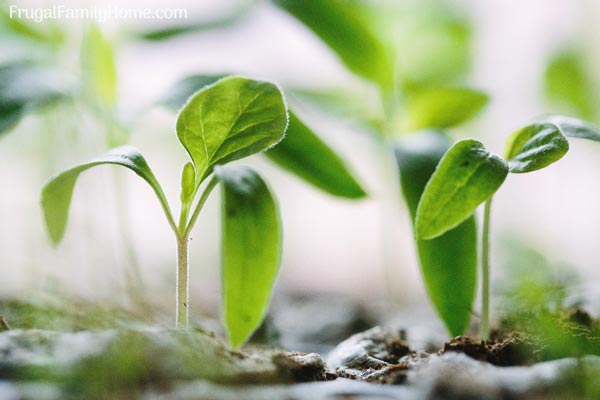
Growing Vegetables in Pots, Seeds or Starts
You have two ways you can start your container garden. You can start with seeds or with plants from your local garden center.
Starting with Seeds
Starting with seeds can be nice. You can grow the variety of plants you want, which can be important. But it also takes more time. Your seedling can have problems if you are new to gardening.
If you want to grow a bush variety of a certain plant, then starting them from seed might be the best way.
Since those types of plants may be harder to come by in your local garden center. But more and more garden centers are carrying bush or compact varieties of plants. Be sure to check.
Starting with Plants
It’s much easier to start your garden with plants. You get the plants from the garden center and then transplant them into your pots.
It’s like an instant garden and you don’t have to worry about your seedlings damping off or getting dug up by the birds. Like what happens at our house almost every year.
But you also can be more limited on the varieties available in your area. If you are totally new to gardening, this might be the best way to start for the first year. Then next gardening season you can try some seeds.
Container Garden Area
Determining where you’ll plant your garden is important. You need an area that has good sunlight as most plants you’ll grow for food need at least 5 hours of sunlight to do well.
Pick an area of the yard or deck or patio that gets sun for a good part of the day. This will help your plants thrive and produce well.
If the area is too shady, the plants won’t grow well and may not produce any produce for you.
But one good thing about container gardening is, if the spot you pick at first doesn’t work, you can always move your garden.
Feeding Plants
After planting your plants be sure to add a couple of inches of compost to the top of the soil. It will help feed the plants each time you water and help hold in moisture too.
I love to get mushroom compost but any kind of compost will work.
Be sure to feed your plants regularly with a liquid fertilizer about twice a month. This will ensure your plants get what they need to grow well.
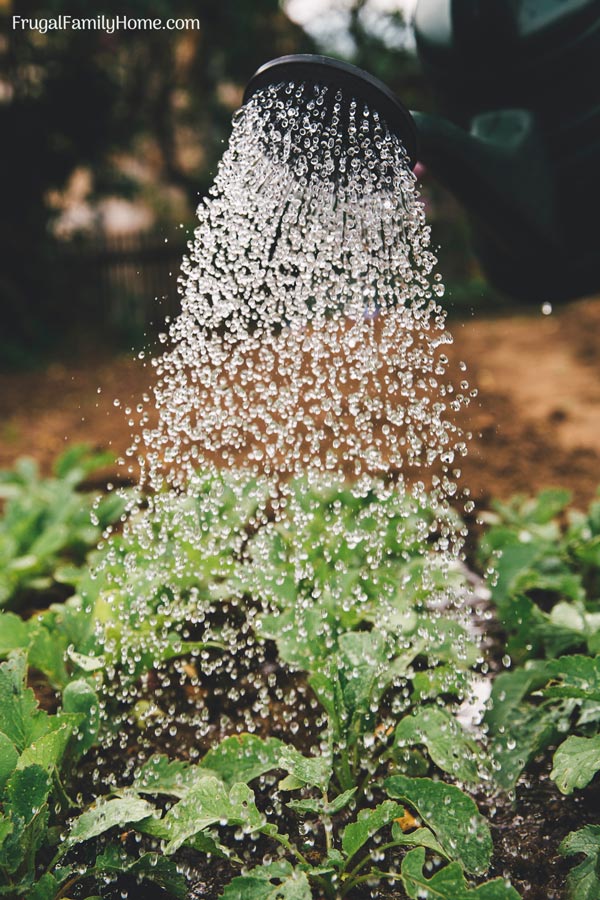
Watering Your Container Garden
You’ll want to water enough to keep your planters consistently moist. On really hot days that might mean watering twice a day.
If your pots are all in one area, you can use a drip or watering system to water them on a timer.
Supports
If you’ll be growing vein varieties or tomatoes support will be needed. You can make your own supports with bamboo in a teepee shape or use wood to build a support.
But the easiest support is to use tomatoes cages. If you planter is square purchase a square tomatoes cage. For a round container use a round cage.
Grow More in One Pot
Group quick growing plants like lettuce and radishes around a slower growing plant like tomatoes in the same pot. You’ll be harvesting the lettuce and radishes first then let the tomatoes grow and take over the pot.
In a large trough container be sure to group plants with like needs for sun and water.
You can find which plants grow best together here.
Those are the basics for starting your own container garden. I hope this helps you see you don’t need a big area to plant a garden.
You can start small with a few containers or a couple of big container and grow your own food.
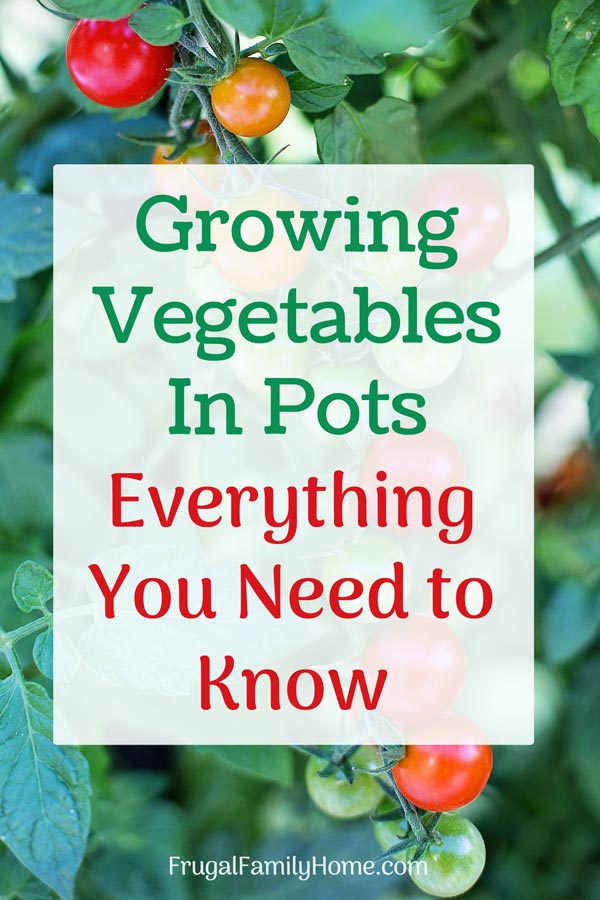
More Gardening Tips
How to Grow Lettuce
Easy Mini Greenhouse for Small Spaces
Tips for Growing Strawberries
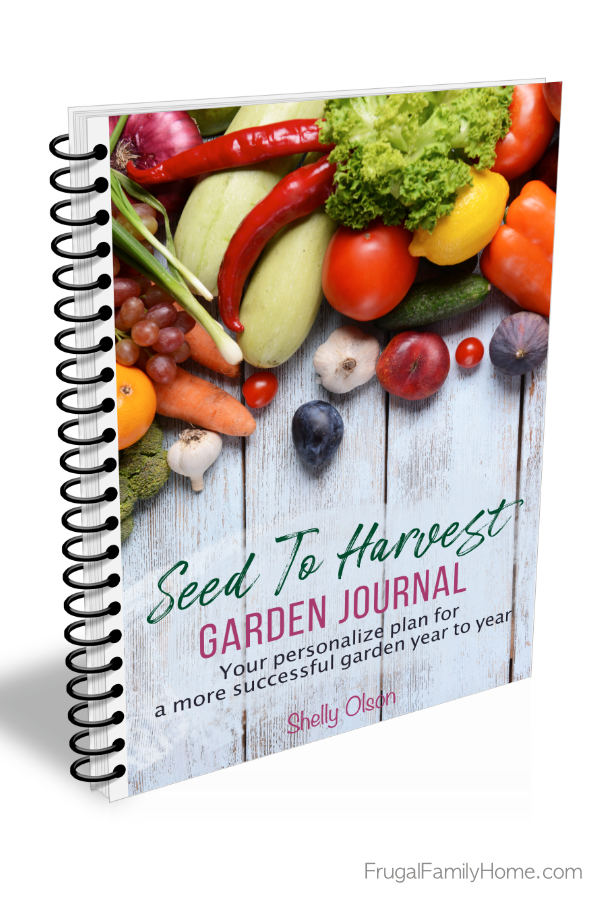
Get the Seed to Harvest Garden Journal
By tracking what works and what doesn’t in your garden you can have a more successful garden year to year.
Get the Companion Plants List
When you join the gardening email list, you'll not only get gardening tips sent to your inbox, you'll also get the companion plants list too.

